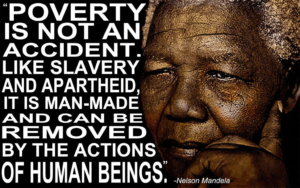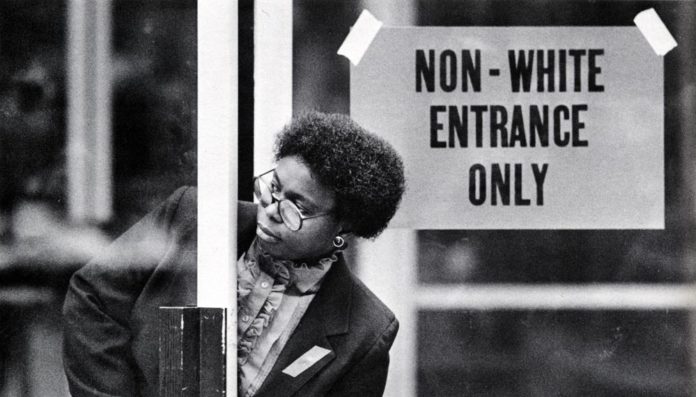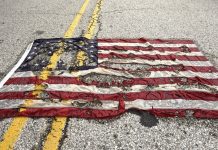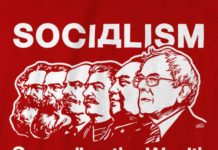It is no secret that the United States has a racist past. With 300 years of slavery and Jim Crow, our country has an unsavory past with regard to race. What is not as well known is that some of the laws that made up American Apartheid are still on the books, and still doing great harm.
 Flash back to the decades before 1933. African Americans had been moving north in great numbers to seek better economic opportunities than were available in the South. There were better economic opportunities in the North, but the African Americans moving North to take those opportunities were not as well educated as the Northerners already working those jobs. Mix in the racism that existed at that time (North and South – this being the era of Jim Crow), and African Americans could only take jobs by offering to work for a little less than their white counterparts, even though they were doing the same work, with the same levels of productivity.
Flash back to the decades before 1933. African Americans had been moving north in great numbers to seek better economic opportunities than were available in the South. There were better economic opportunities in the North, but the African Americans moving North to take those opportunities were not as well educated as the Northerners already working those jobs. Mix in the racism that existed at that time (North and South – this being the era of Jim Crow), and African Americans could only take jobs by offering to work for a little less than their white counterparts, even though they were doing the same work, with the same levels of productivity.
Businesses learned quickly that if they hired only African Americans for those jobs that did not require as much of an education, their labor costs were lower than were those of competitors who hired only white workers, and in 1933, the African American unemployment rate was lower than that for white Americans, with a workforce participation rate that was higher than that for white Americans. African Americans still made less than white Americans, for the same work (which is what drove the higher workforce participation rate and the lower unemployment rate), but the pay gap was closing. The children of African American workers in the North were better educated than their parents had been, and were moving further up in the workforce than their parents had.
Just as many voters today fear that immigration from Central and South America will displace American workers, so too in the early 1930s, white voters in the North were afraid that African Americans migrating North were displacing them from jobs, and reducing their income potential. Political pressure emerged to create something America had never had before: a national minimum wage.
In 1933, Franklin D. Roosevelt signed America’s first Minimum Wage Act into law, and suddenly, firms found that it was just as expensive to hire African American workers as it was to hire white workers. Racism no longer led to lower profitability compared to competitors who were not racist, and firms began hiring white people first again. The unemployment rate for African Americans immediately shot above that of white Americans, and it has never been the same as, or lower than, the unemployment rate for white Americans again.
Flash forward to South Africa, after World War Two. Black South Africans were dominating many fields, such as construction. Black South Africans in fact had a lower unemployment rate in South Africa than did white South Africans, and black South Africans had a higher workforce participation rate than did white South Africans. There was a pay gap between black and white workers doing the same things, but the pay gap was closing. The white labor unions pressed for political reform to address, what they considered a major problem.
South Africa passed laws ensuring that black South African schools would always be inferior to white South African schools (it was a segregated society, so this was easy), and passed minimum wage and prevailing wage laws to ensure that black South African workers were just as expensive – but not as well educated – as white South Africans. Just as the minimum wage in America oppressed African American labor, so too these reforms in South Africa oppressed black South African labor. These reforms were a central pillar of the economic side of Apartheid.
Flash forward to the United States in the late 1950s and early 1960s. Inflation had effectively eliminated our minimum wage laws. We still had minimum wages on the books, but they were lower than the market clearing price of labor, so everyone who wanted a job could find one, and the jobs all paid more than the minimum. The African American unemployment rate and workforce participation rates were approaching the white American rates, and though there was a wage gap, it was closing. Employers were quickly catching on that they could make more money by hiring African American labor first, and this time African Americans were, on average, much better educated than they had been 30 years earlier, and poised to move much further up the income ladder.
The Democrat Party under Lyndon B. Johnson had a problem. African Americans had been voting primarily Democrat since 1934 – ironically, one year after Roosevelt passed the first law specifically aimed to oppress African American labor. Jim Crow was still in effect, and the Democrats had been fighting to keep it, using every trick in the book to block Republicans from passing the Civil Rights Act. Lyndon B. Johnson had spent most of his career in the House of Representatives, rising as far as Speaker of the House before becoming President, and he had a perfect record of voting against the Civil Rights Act. African Americans were on the verge of turning Republican, which Johnson knew would be the death knell of the Democrat Party. At the same time, white Americans wanted African Americans oppressed in the workforce. What was Johnson to do?
First, he flipped on the Civil Rights Act, telling Democrats to pass it so he could sign it. The Civil Rights Act passed (with nearly universal Republican support – Democrat support was split), and was signed into law in 1964.
Had Johnson stopped there, we would have a post-Racist nation today, but Johnson did not stop there. White America wanted white people protected in the workforce, and that was still a job for Democrats like Lyndon B. Johnson.
Lyndon B. Johnson created what he called the ‘War on Poverty.’ Milton Friedman looked at the reforms – which were the same reforms South Africa had put in place after World War Two – and called it the ‘War on Black People.’
Lyndon B. Johnson’s knew that his housing and bussing laws would push, not only white people out of the inner cities, but also wealthy African Americans. ‘White Flight’ drove wealth into the suburbs. In some areas, like Kalamazoo, MI, (where I grew up), the suburbs were in the same school districts as the inner cities, so the educational opportunities for African American and white American children were the same, but in bigger cities, like Detroit, the suburbs were separate cities, with separate educational systems. The suburban schools flourished, and the inner city schools decayed. There were far more people in big cities like Detroit, Chicago, and New York, then there were smaller cities, like Kalamazoo.
Minimum wage and prevailing wage laws ensured that kids graduating from High School all cost the same to hire, regardless of how well educated they were. Since the better educated kids were in the suburbs (and were white), factories and other businesses that could move, moved to the suburbs. Over time economic opportunities in the inner cities (which were predominately African American) collapsed.
Welfare programs took care of inner city families, but there was a catch – the father had to leave the home. In 1960, less than 30% of all African American children were born into single parent homes. Today, more than 70% are.
A child born into the inner city found himself or herself with no economic opportunities, other than mothers with children, who could get welfare if they were single. Men had no economic opportunities at all. Men in the inner cities found that the only economic opportunities they had were illegal, and the War on Drugs exasperated that. Over time, many inner city children lost interest in being educated.
Affirmative Action laws were passed to try and, amongst other things, even out educational opportunities. Unfortunately, while affirmative action laws helped minority students get into college, affirmative action did so by putting students into colleges they would never have been able to get into based on SAT scores and other objective measurements. The result was that the drop-out rate for those students who ‘benefitted’ from affirmative action went through the roof. MIT, as just one example, will take an African American student who is in the 90th percentile in math, but all of the white students getting in are in the 99th percentile. African American students at MIT who are in the 99th percentile in math graduate at the same rates as white students at MIT, but the African American students who are below that level, and who got into MIT because of affirmative action, have sky high drop out rates.
Affirmative Action helps white people, who can pat themselves on the back and say, “Look how diverse we are,” but I fail to see the benefit to a 22 year old African American who now owes $100,000 in student loans to MIT, and who dropped out without a degree. Affirmative Action, far from propping up minority students, has proven to set them up for failure.
In today’s America, African American children born into two parent households have the same per capita economic opportunities that white children born into two parent households have. African American children whose parents are college educated actually do better on a per capita basis than do white children whose parents are college educated. White children born into the inner cities do just as poorly, in terms of per capita economic outcomes, as do African American children born in the inner cities.
The difference is that only 30% of white children are born into single parent households, whereas more than 70% of African American children are. The proportion of white families where the parents are college educated is much higher than the proportion of African American households where the parents are college educated. The proportion of white children growing up in situations that are conducive to success is higher than the proportion of African American children growing up in situations that are conducive to success.
And we STILL have minimum wage laws, prevailing wage laws, Affirmative Action, and all of the other oppressive laws that were a part of the War on Poverty, on the books, keeping the economic side of American Apartheid alive and well. Many African Americans are still oppressed by laws specifically designed to put them at a competitive disadvantage in the workforce.
And you can thank Lyndon B. Johnson, and Franklin D. Roosevelt.
There is an alternative, as outlined by Milton Friedman and described in the post ‘The Case Against the Minimum Wage’ – http://thedailylibertarian.com/case-minimum-wage/ . Milton Friedman’s replacement for the minimum wage would accomplish the same things the minimum wage does, and would be a replacement for welfare as well (over time at least – we cannot ethically end welfare overnight), but it would do far more than that. It would reverse the economic consequences of the War on Poverty, creating economic incentives for employers to relocate to our inner cities, and reversing the devastating consequences of Lyndon B. Johnson’s policies.
Unfortunately, the same party that created the War on Poverty has other ideas. They want to raise the minimum wage to $15 an hour, and to increase welfare benefits, perhaps with a universal basic income that would destroy the incentive to work. They want to double-down on the policies of poverty and oppression. Our moral imperative as libertarians is clear: we must oppose the minimum wage, and we must press hard for Milton Friedman’s alternative.


























[…] not created by the people living there. I’ve shown in the past how Lyndon B. Johnson’s ‘War on Poverty’ was modeled after parts of Apartheid, and about how though the anger and resentment in our inner city communities is justified, it is […]
[…] not created by the people living there. I’ve shown in the past how Lyndon B. Johnson’s ‘War on Poverty’ was modeled after parts of Apartheid, and about how though the anger and resentment in our inner city communities is justified, it is […]
[…] not created by the people living there. I’ve shown in the past how Lyndon B. Johnson’s ‘War on Poverty’ was modeled after parts of Apartheid and how though the anger and resentment in our inner-city communities are justified, it is also […]
[…] Someone may try to call me a racist for focusing on black-on-black crime, but I do not blame black people for black-on-black crime. Before the so-called War on Poverty, the crime rate in African American communities was not notably higher than in white communities. The War on Poverty has been incredibly damaging, and particularly in predominantly African American communities, which is not surprising given that the War on Poverty was modeled after Apartheid. […]
[…] Someone may try to call me a racist for focusing on black-on-black crime, but I do not blame black people for black-on-black crime. Before the so-called War on Poverty, the crime rate in African American communities was not notably higher than in white communities. The War on Poverty has been incredibly damaging, and particularly in predominantly African American communities, which is not surprising given that the War on Poverty was modeled after Apartheid. […]
[…] Someone may try to call me a racist for focusing on black-on-black crime, but I do not blame black people for black-on-black crime. Before the so-called War on Poverty, the crime rate in African American communities was not notably higher than in white communities. The War on Poverty has been incredibly damaging, and particularly in predominantly African American communities, which is not surprising given that the War on Poverty was modeled after Apartheid. […]
[…] Socio-economic differences exist, and we see that as we move between neighborhoods, but that too has nothing to do with race (though the driving forces causing those socio-economic differences, such as the War on Poverty and redlining, had everything to do with race). […]
[…] Socio-economic differences exist, and we see that as we move between neighborhoods, but that too has nothing to do with race (though the driving forces causing those socio-economic differences, such as the War on Poverty and redlining, had everything to do with race). […]
[…] There is one group that does not fit this model: African Americans whose ancestry goes through the Antebellum South. This one group has been systemically oppressed for the entire duration of our nation’s existence, first through slavery, then through Jim Crow, and finally through the so-called ‘War on Poverty.’ […]
[…] help others. For an overview of all the harm the War on Poverty has caused, you may enjoy reading American Apartheid. For an overview on the difference between ‘doing good,’ and ‘feeling […]
[…] help others. For an overview of all the harm the War on Poverty has caused, you may enjoy reading American Apartheid. For an overview on the difference between ‘doing good,’ and ‘feeling […]
[…] proposals, and I could continue to do so all day. Minimum wages cause great harm, as has the War on Poverty. The list is endless. I could just as easily pick on conservative ideas. The War on Drugs comes to […]
[…] proposals, and I could continue to do so all day. Minimum wages cause great harm, as has the War on Poverty. The list is endless. I could just as easily pick on conservative ideas. The War on Drugs comes to […]
[…] If cultural elements are holding people back, we might look to see what drives those cultural elements. And the driving force their is the War on Poverty, as noted in this article (click link). […]
[…] If cultural elements are holding people back, we might look to see what drives those cultural elements. And the driving force their is the War on Poverty, as noted in this article (click link). […]
[…] Nixon had a very impressive record on civil rights. Let’s look at Lyndon Johnson’s War on Poverty (link at end of paragraph), which was so damaging to African American families that Milton Friedman called it the ‘War on Black People’. The so-called ‘war on poverty’ was not a Republican idea. It came from Lyndon Johnson, and was modeled after parts of Apartheid. […]
[…] Nixon had a very impressive record on civil rights. Let’s look at Lyndon Johnson’s War on Poverty (link at end of paragraph), which was so damaging to African American families that Milton Friedman called it the ‘War on Black People’. The so-called ‘war on poverty’ was not a Republican idea. It came from Lyndon Johnson, and was modeled after parts of Apartheid. […]
[…] children directly benefit from what I call American Apartheid, so I am affected by systemic racism – just in a positive, rather than a negative way. […]
[…] For more on the racism of the left, please see American Apartheid. […]